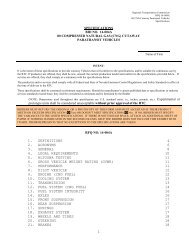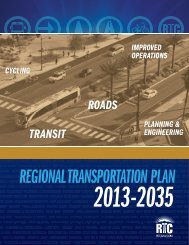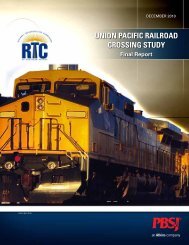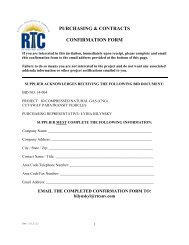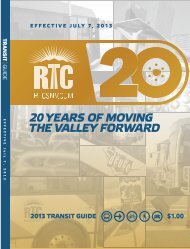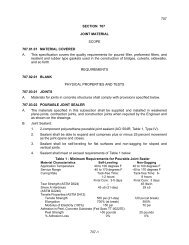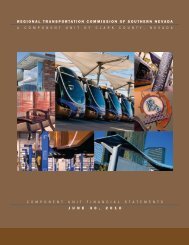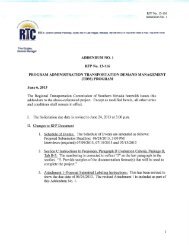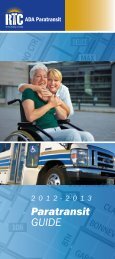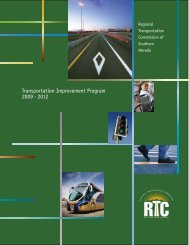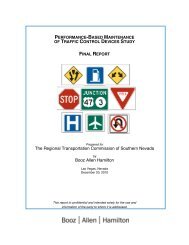(Blue Diamond Road) Corridor Study - Regional Transportation ...
(Blue Diamond Road) Corridor Study - Regional Transportation ...
(Blue Diamond Road) Corridor Study - Regional Transportation ...
Create successful ePaper yourself
Turn your PDF publications into a flip-book with our unique Google optimized e-Paper software.
8. Estimated System Costs RTC SR-160 <strong>Corridor</strong> <strong>Study</strong><br />
As under Alternative 1, annual service hours for each route alternative are a direct reflection<br />
of the route length, peak service frequency, and operating speed of each route. For<br />
Alternative 2, this means that the most service hours are associated with the express route<br />
operating at 15 minute peak frequencies. On a cost basis, however, the higher cost per<br />
hour results in the BRT route being the most expensive to operate.<br />
8.2.4 Summary/Conclusions<br />
Alternative 2 alternatives represent an overall lower level of investment than Alternative 1<br />
alternatives in each of the three key years of investment – 2008, 2015, and 2025. The<br />
delay of BRT implementation and one less local route under Alternative 2 build-out in 2025<br />
result in a 34% lower overall operating cost impact than the Alternative 1 2025 alternative.<br />
The difference between the two alternatives is even greater in 2008 with Alternative 1 being<br />
85% more costly to operate than Alternative 2 which includes a single express route as<br />
opposed to both an express and local route in Alternative 1. However, the 2008 Alternative<br />
2 alternative provides no north-south connectivity to the current CAT system west of I-15<br />
whereas Alternative 1 connects to the current CAT system along Rainbow Boulevard<br />
Additionally, the higher initial investment under Alternative 1 results in less growth in<br />
operating costs from 2008 to 2015, and 2008 to 2025 at 48 percent and 116 percent<br />
respectively than under Alternative 2 where costs are estimated to grow by 86 percent from<br />
2008 to 2015, and by 163 percent from 2008 to 2025. Cost growth is a direct reflection of<br />
the number of service hours provided under each option as shown in EXHIBIT 8-8.<br />
EXHIBIT 8-8: Comparison of Vehicle Service Hours<br />
Alternative 1 Alternative 1 Alternative 1 Alternative 2 Alternative 2 Alternative 2<br />
Service Hours<br />
(2025) (2015) (2025) (2015) (2015) (2025)<br />
Bus Service Hours 58,953 71,779 112,092 36,296 67,717 80,876<br />
8-11



